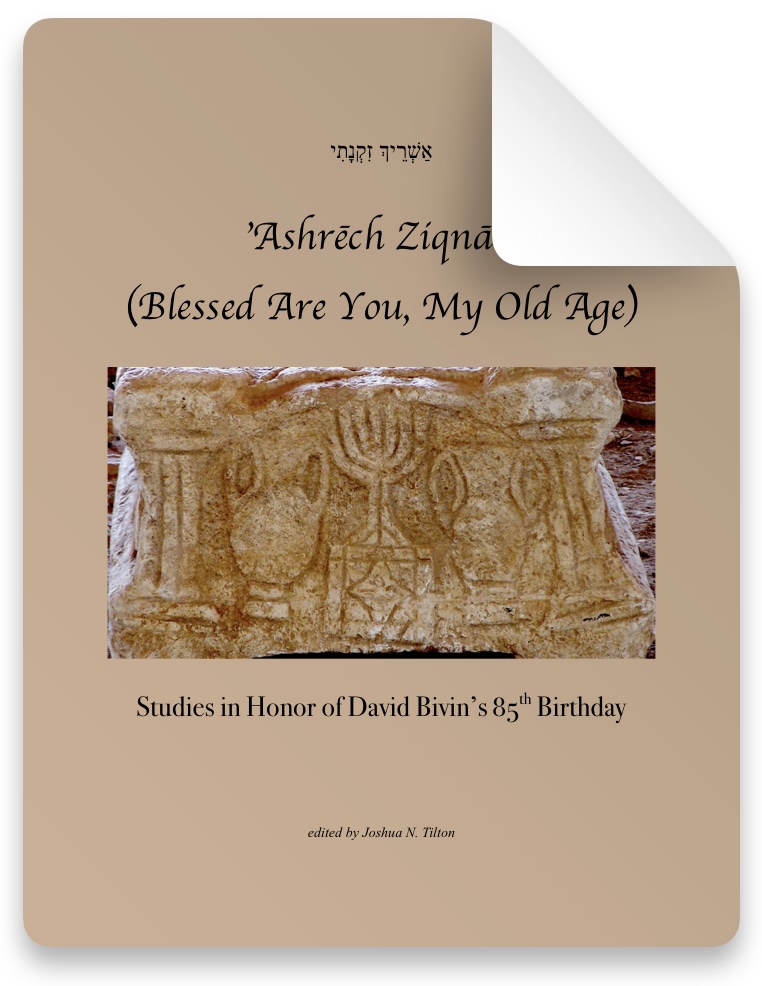How to cite this article: Jeffrey P. García, “From the Galilee to Jerusalem: Luke as a Source for the Routes of Jewish Pilgrimage,” Jerusalem Perspective (2024) [https://www.jerusalemperspective.com/28996/].
This article belongs to the collection Ashrech Ziqnati (Blessed Are You, My Old Age): Studies in Honor of David Bivin’s 85th Birthday.

Of the four Gospels,[1] Luke uniquely portrays pilgrimage as an integral part of Jesus’ life and ministry. This is not surprising, as pilgrimage to Jerusalem was an important part of the Jewish life for communities in the land and the diaspora. Exodus commands that on the feasts of unleavened bread (הַמַּצּוֹת חַג [ḥag hamatzōt]; i.e. Passover), weeks (חַג הַשָּׁבֻעוֹת [ḥag hashāvu‘ōt], Shavuot/Pentecost), and booths (חַג הַסֻּכּוֹת [ḥag hasukōt], Sukkot) one must not appear before the Lord “empty handed” (רֵיקָם [rēqām], Exod. 23:14-17; 34:23-34). By the first century C.E., being in Jerusalem for the three holy days was not obligatory, but the pilgrimage was observed by many. Josephus, rewriting parts of the Book of Exodus, describes pilgrimage in the following way:
Let those that live as remote as the bounds of the land which the Hebrews shall possess, come to that city where the temple shall be, and this three times in a year, that they may give thanks to God for his former benefits, and may entreat him for those they shall want hereafter. (Ant. 4:203)
Tobit’s story which is set in Nineveh—approximately 500 miles east of Jerusalem—mentions his regular journeys to Jerusalem, “But I alone went often (πλεονάκις [pleonakis]) to Jerusalem for the feasts, as it is ordained for all Israel by an everlasting decree” (Tob. 1:6). Philo, the Alexandrian philosopher, waxed poetic about the importance of pilgrimage to Jewish communities in the diaspora:
For innumerable companies of people from a countless variety of cities, some by land and some by sea, from east and from west, from the north and from the south, came to the temple at every festival, as if to some common refuge and safe asylum from the troubles of this most busy and painful life, seeking to find tranquility, and to procure a remission of and respite from those cares by which from their earliest infancy they had been hampered and weighed down, and so, by getting breath as it were, to pass a brief time in cheerful festivities, being filled with good hopes and enjoying the leisure of that most important and necessary vacation which consists in forming a friendship with those hitherto unknown, but now initiated by boldness and a desire to honor God, and forming a combination of actions and a union of dispositions so as to join in sacrifices and libations to the most complete confirmation of mutual good will. (Spec. Laws 69-70)
Historians and archaeologists alike note that pilgrimage meant an economic boom for Jerusalem[2] and was essential to Jewish spirituality in the Second Temple period. As with other pilgrimages in the Greco-Roman world, the routes that were taken to the holy city carried spiritual and economic weight. Yet, apart from a handful of accounts that either imply or describe them, information about the routes used for pilgrimage are few. Luke’s depiction of Jesus making his way to Jerusalem, however, preserves a valuable vestige of them. Therefore, the purpose of this study is to examine the third Gospel as a source for how Jewish communities traveled to Jerusalem from the Galilee.[3] Consequently, there are three major routes, and contingent arteries, explored here: 1) In the Land of Antipas—The Route Through Perea; 2) The Way to Emmaus—The Coastal Route; 3) The Way of the Patriarchs—The Route through Samaria.[4]
Paid Content
Premium Members and Friends of JP must be logged in to access this content: Login
If you do not have a paid subscription, please consider registering as a Premium Member starting at $10/month (paid monthly) or only $5/month (paid annually): Register
One Time Purchase Rather Than Membership
Rather than purchasing a membership subscription, you may purchase access to this single page for $1.99 USD. To purchase access we strongly encourage users to first register for a free account with JP (Register), which will make the process of accessing your purchase much simpler. Once you have registered you may login and purchase access to this page at this link:

Romeyn de Hooghe. Image courtesy of Wikimedia Commons.
- [1] For David, whose scholarship and friendship, from afar, has left an indelible mark on my journey. ↩
- [2] Martin Goodman, “The Pilgrimage Economy of Jerusalem in the Second Temple Period,” in Jerusalem: Its Sanctity and Centrality in Judaism, Christianity, and Islam, ed. Lee Levine (New York: Continuum, 1999), 69-76; also idem, Judaism in the Roman World: Collected Essays (Leiden: Brill 2007). See also, Shmuel Safrai, “The Temple,” 808-904, in The Jewish People in the First Century: Historical Geography, Political History, Social, Cultural, and Religious Life and Institutions, Volume Two, eds. Shmuel Safrai and Menahem Stern, CRINT (Philadelphia: Fortress Press, 1976); Gideon Hartman, Guy Bar-Oz, Ram Bouchnick, and Ronny Reich, “The Pilgrimage Economy of Early Roman Jerusalem (1st Century BCE – 70 CE) Reconstructed Remains from the d15N and d13C Values of Goat and Sheep Remains,” Journal of Archaeological Science 40 (2013): 4369-4376. ↩
- [3] There were also diaspora routes to the land of Israel; see Shmuel Safrai, Pilgrimage in the Second Temple Period (Tel Aviv: Am Hassefer Publishers, 1965), 114-118 [Heb.], for a discussion on the many ways that were taken by pilgrims to reach Jerusalem. ↩
- [4] Safrai describes middle, eastern, and western routes: 1) middle: the land of the Cutim (Samaria), En-gannim, Shechem; 2) eastern: Beth Shean to Jericho; 3) western: Kephar Otnay, Antipatris, “from there one of the pilgrimage roads to Jerusalem,” Safrai, Pilgrimage, 116. ↩































































































